Photographs that will make you want to visit Eastern Turkey
Eastern Turkey is an underrated destination that never seems to have any luck when it comes to increasing the number of overseas tourists. Plagued by internal conflict between the Turkish Government and the Kurdistan Workers’ Party (PKK) that has been ongoing since the mid-1980s, the region and its population now have Islamic State, the war in Syria and conflict in Iraq to contend with as well.
It’s a massive shame – spectacular landscapes, some seriously impressive sights and the warmth and hospitality of the local population (mainly Kurds) combined with good infrastructure make the region perfect for the adventurous traveller. Here are twelve places you should visit in Eastern Turkey that we very much enjoyed during our time in Turkey’s wild east.
Ahlat, Lake Van
The main reason to visit this small town on the northern shores of Lake Van is to see the splendid Seljuk graveyard and tombstones. Battered over the centuries by the elements, the tombstones are nowadays set at all sorts of strange angles. A series of paths lead through the graveyard, making it easy to navigate but be careful where you tread as it’s not uncommon to see wild tortoises meandering from one tomb to the next.
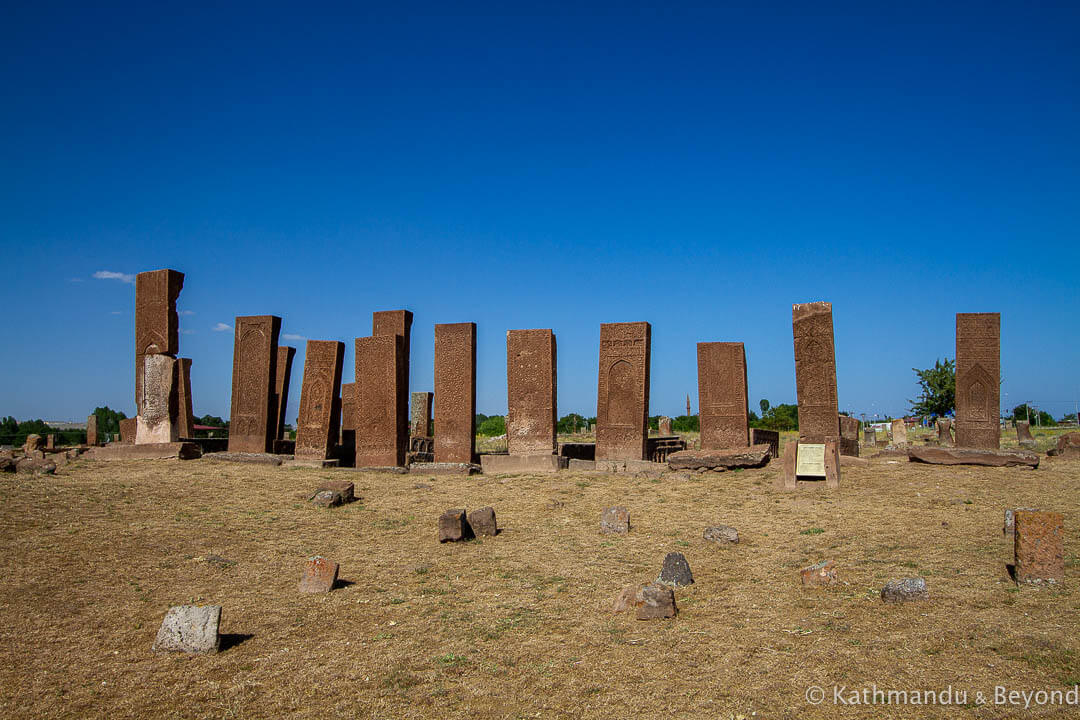
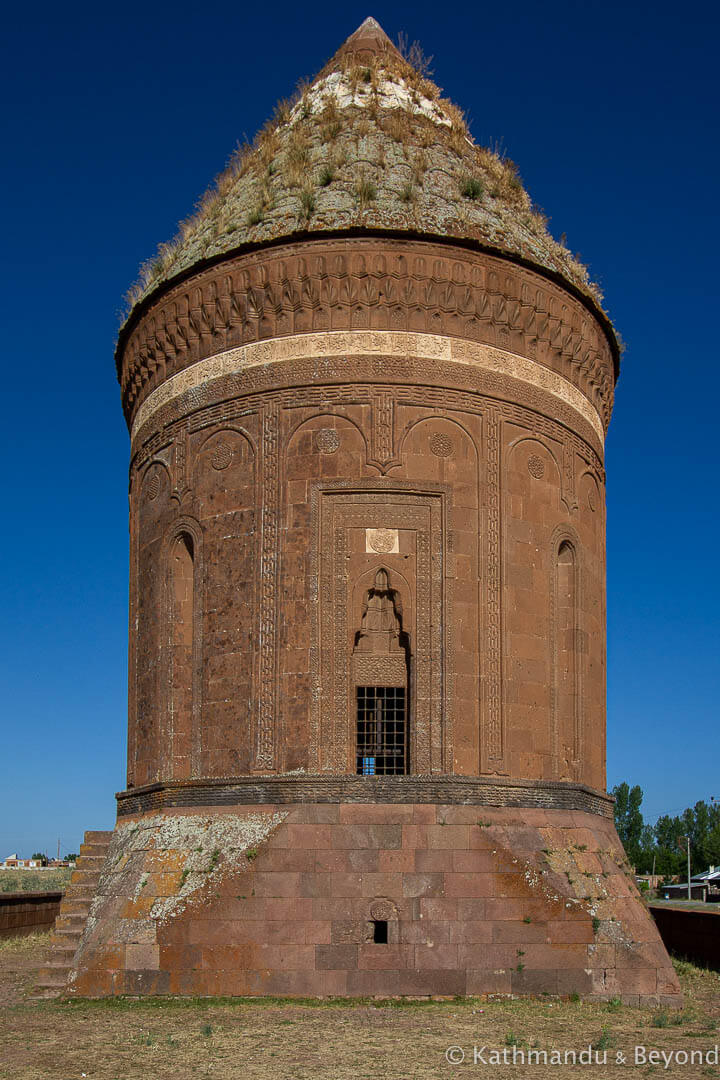
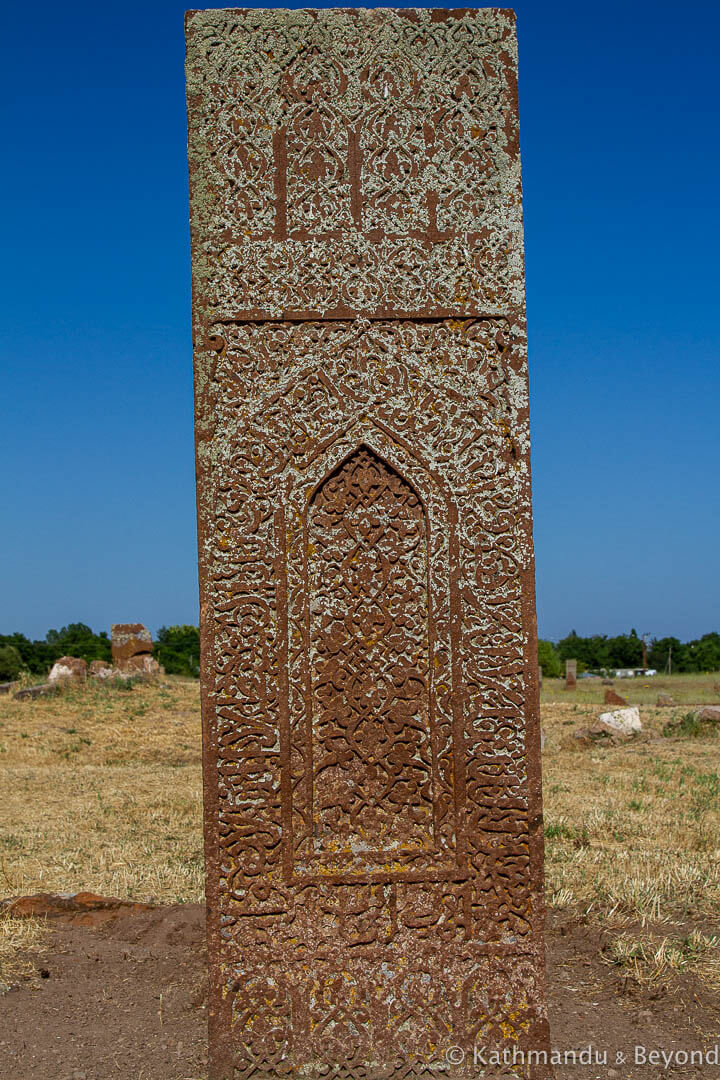
Above: The Seljuk cemetery in Ahlat, with Bayındır Tomb (bottom left)
Akdamar Island, Lake Van
Along with Mount Ararat, the Armenian Church of the Holy Cross on Akdamar Island is Kurdistan’s most renowned attraction. Accessible only by boat, the church itself is a classic example of Armenian architecture and the 360-degree views of the lake and the surrounding mountains are breathtaking beyond compare.
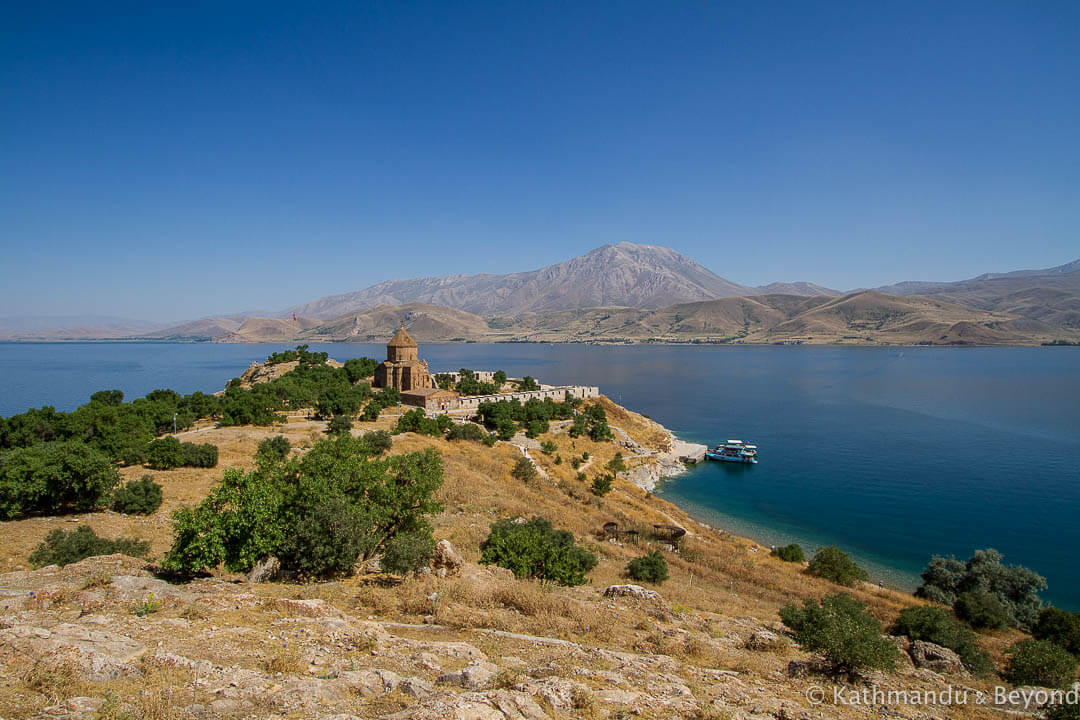
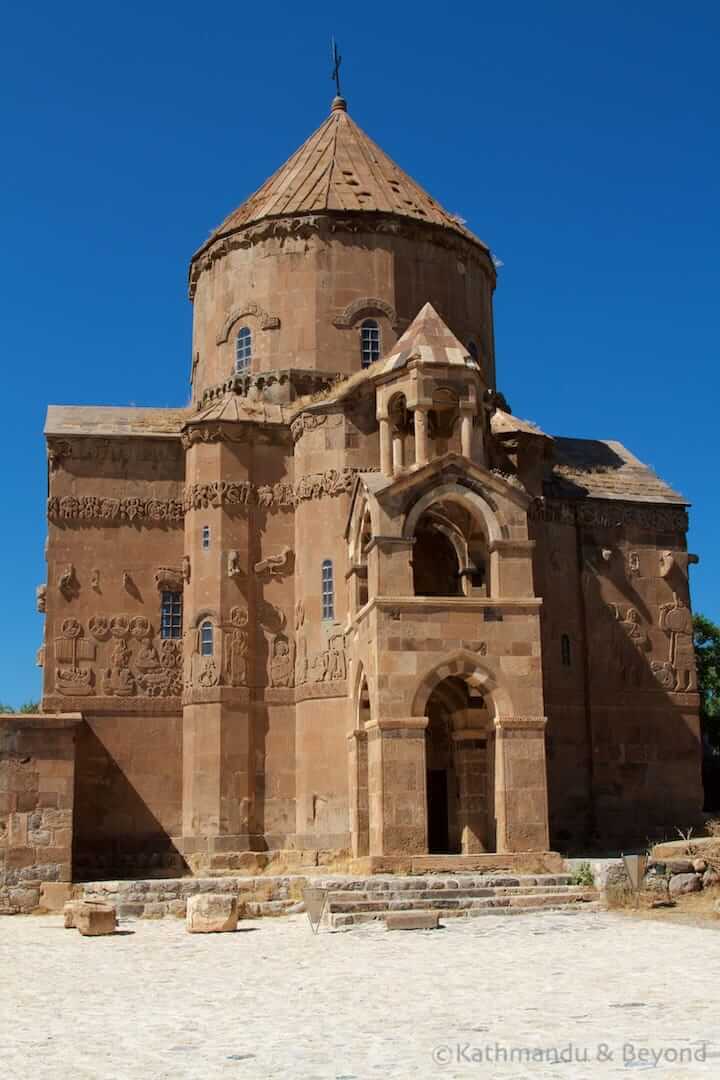
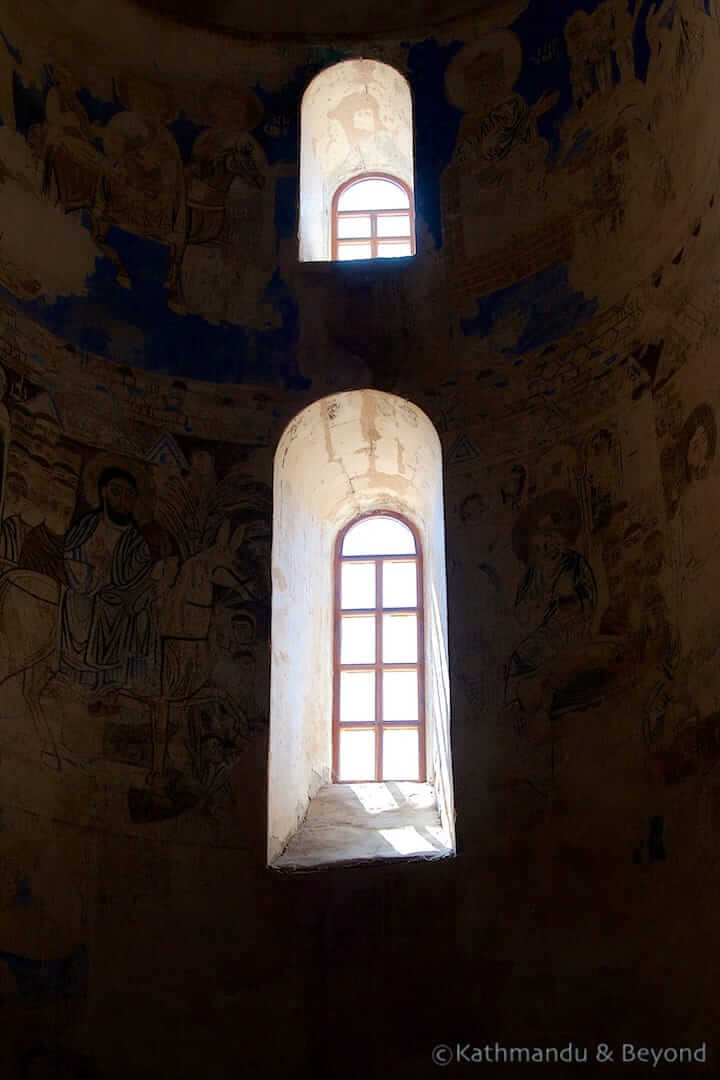
Above: Akdamar Island on Lake Van
Malatya
Malatya is the apricot capital of Turkey and after the harvest in late June, the city is awash with this sweet-smelling produce. It is impossible to walk through the city’s colourful market and not be offered handful after handful of these yummy orange-coloured fruits by friendly locals.
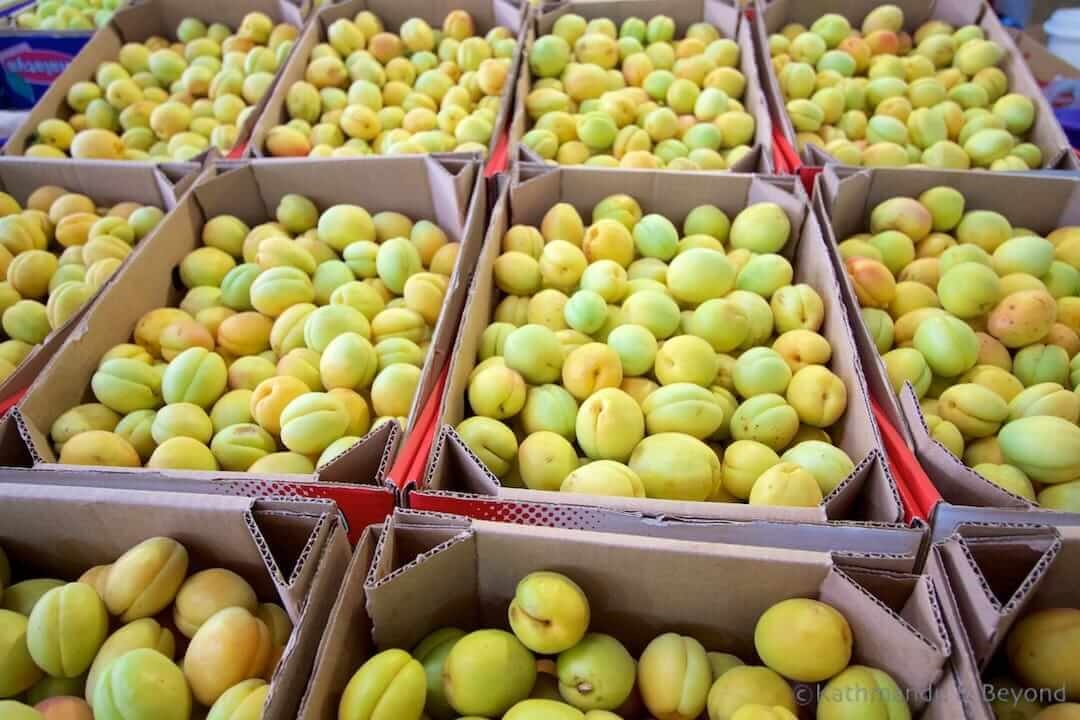
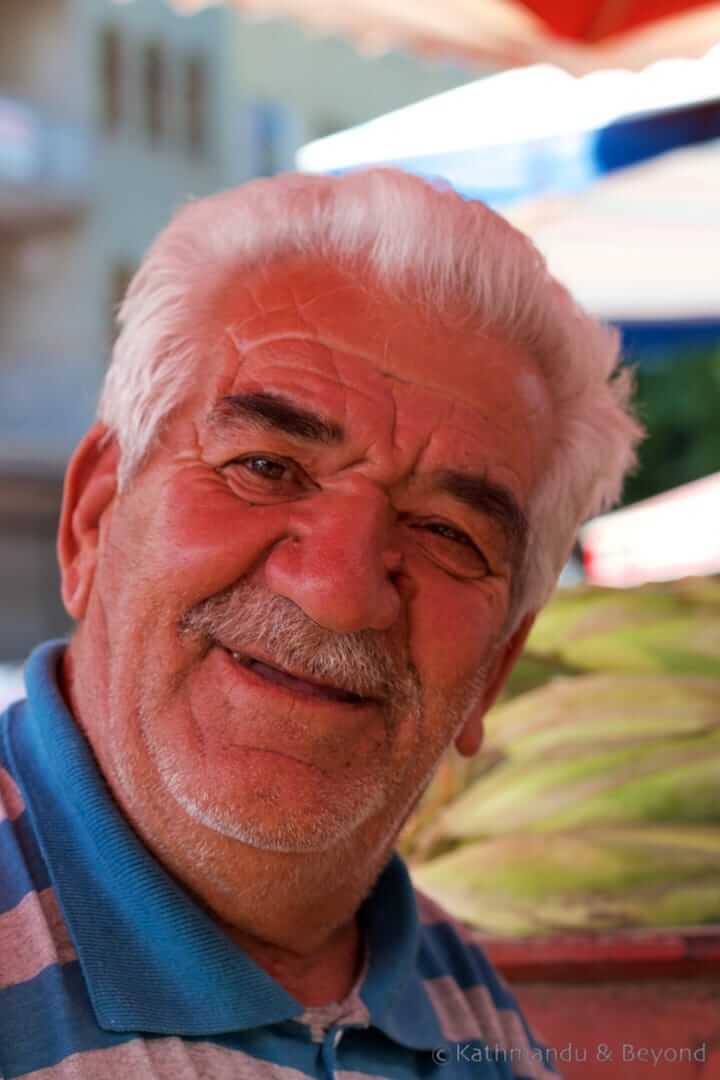
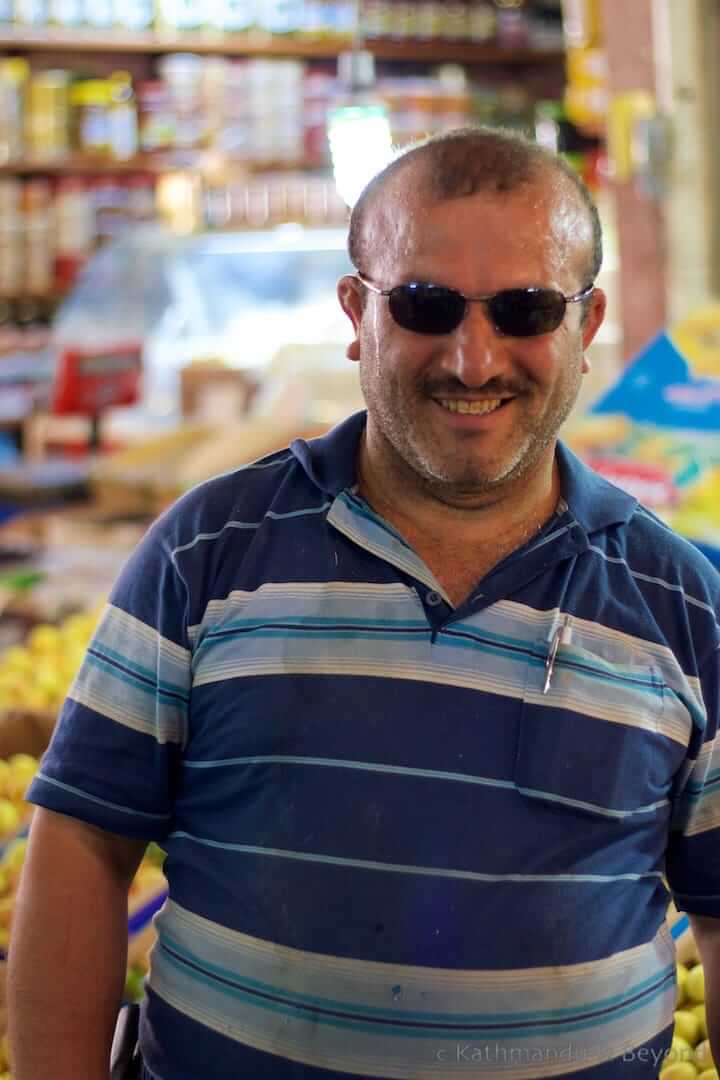
Above: local market in Malatya
Dogubayazit
The scruffy border town of Dogubayazit has a strong Kurdish heritage and is located in one of the most dramatic settings in all Turkey. To the east enigmatic Mount Ararat looms over the town, occasionally poking its head out above the clouds to offer a tantalising view of its snowcapped peak. Southeast of the town, reached by a seemingly never-ending series of switchbacks, is the gloriously located Ishak Pasa Palace. A stunning fortress, palace and mosque all rolled into one, the vistas from the ridge just above the structure are a feast for the eyes and worth the effort of the climb.
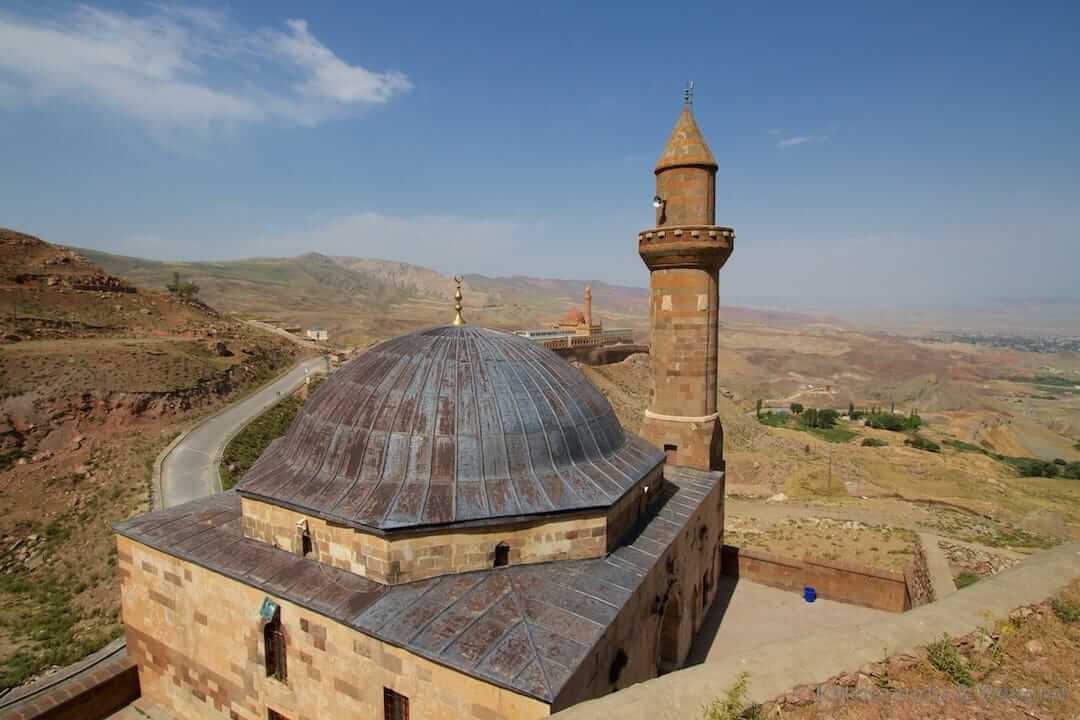
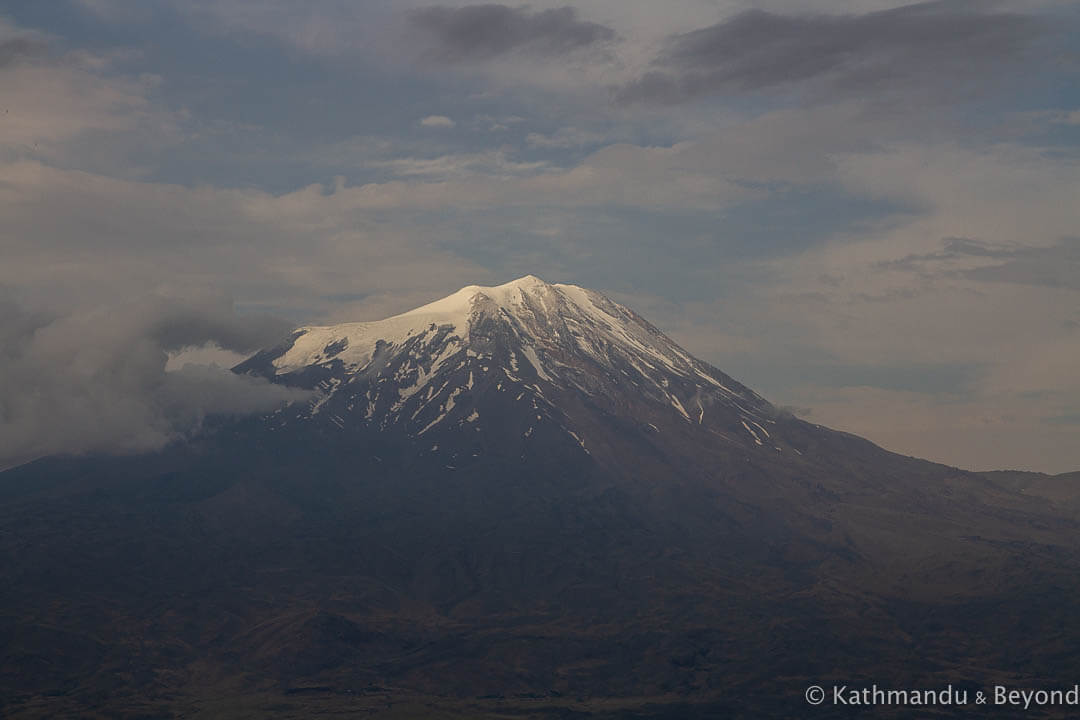
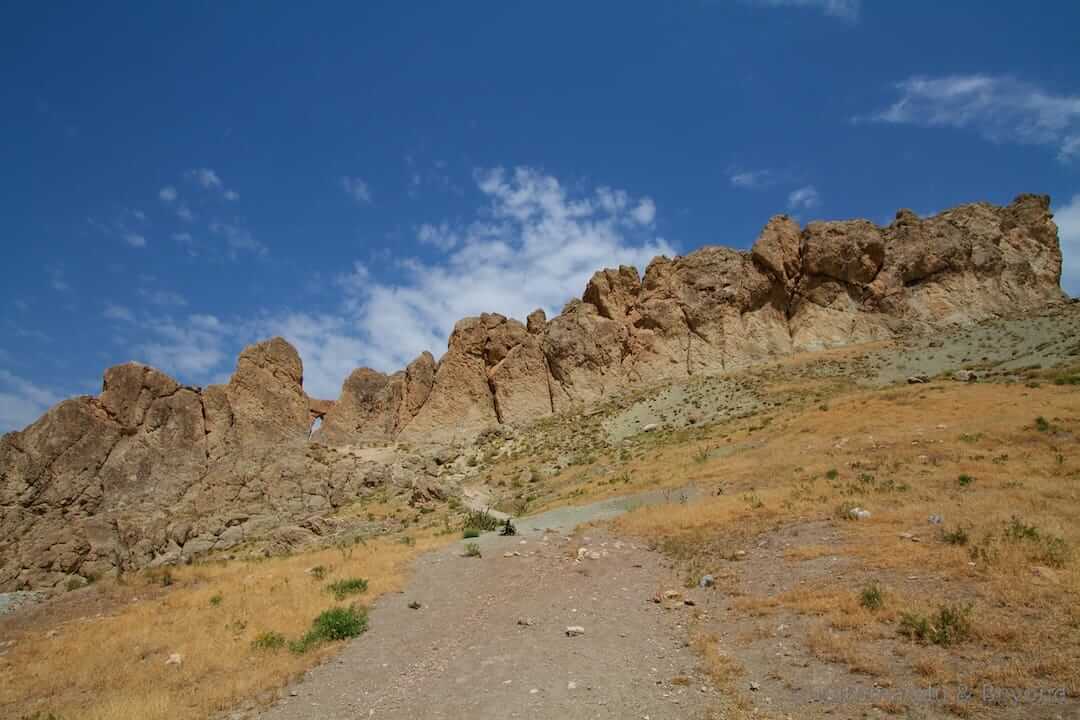
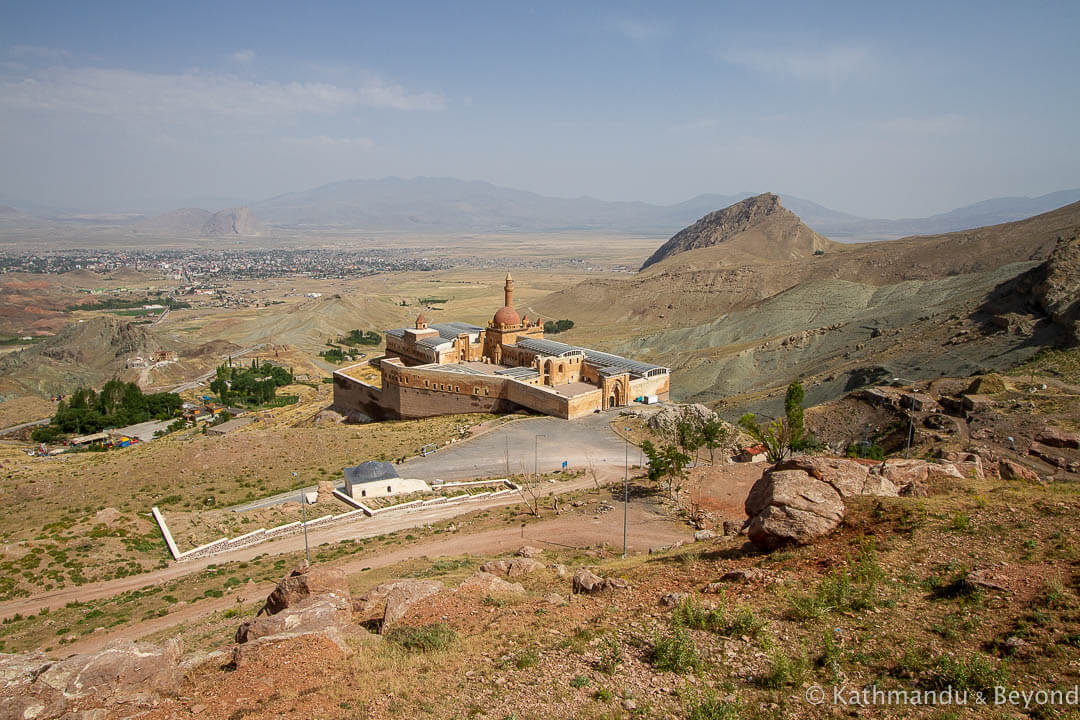
Above: Dogubayazit with the Beyazıt Mosque (top), Mount Ararat (middle left) and ishak Pasa Palace (below)
Bitlis (near Lake Van)
15km inland from the west coast of Lake Van, work-a-day Bitlis doesn’t see many tourists, yet it has one of eastern Anatolia’s highest concentrations of restored historical buildings including a huge castle that is visible from almost anywhere in the town and the important Ihlasiye Madrasa (Islamic school) which dates back to the 13th century.
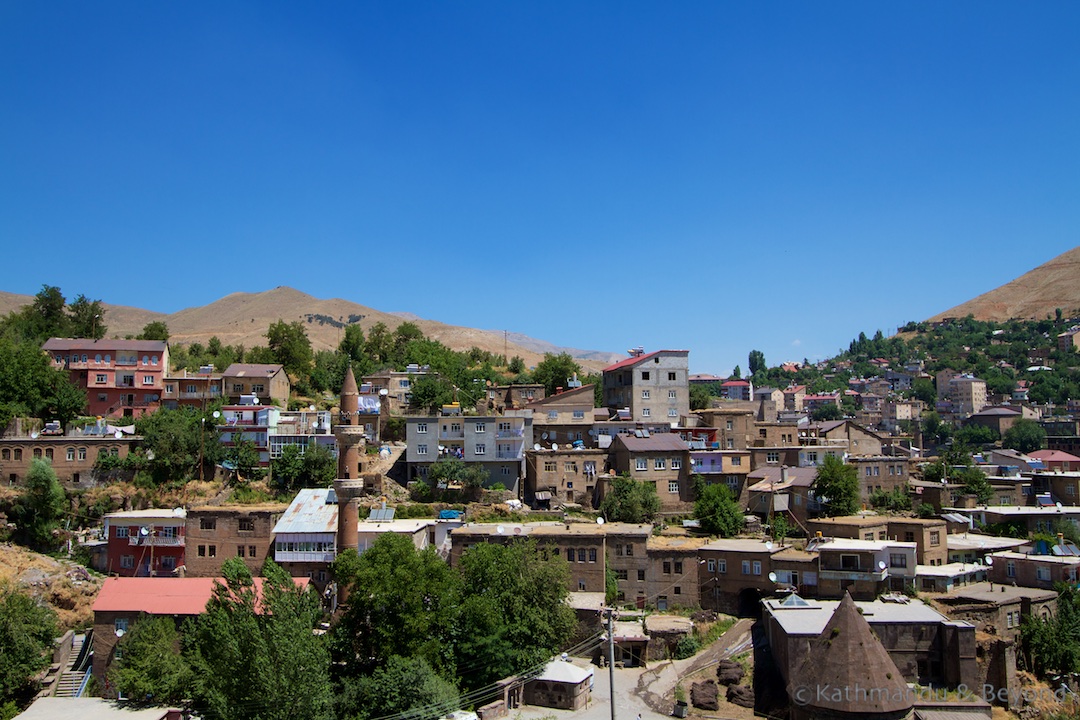
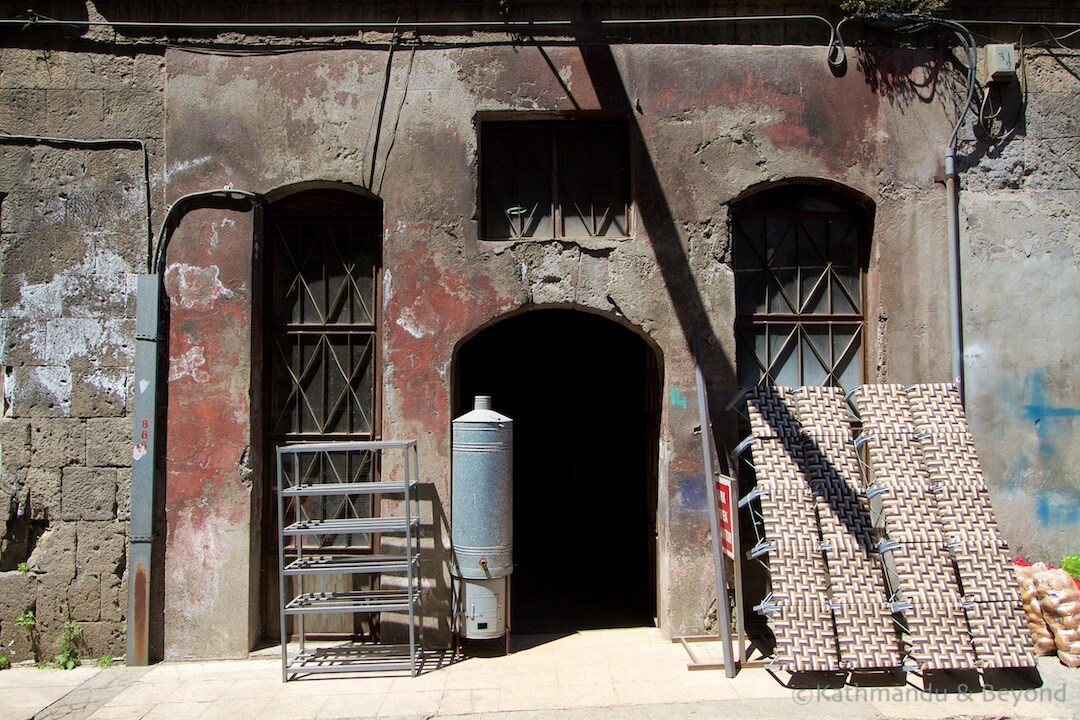
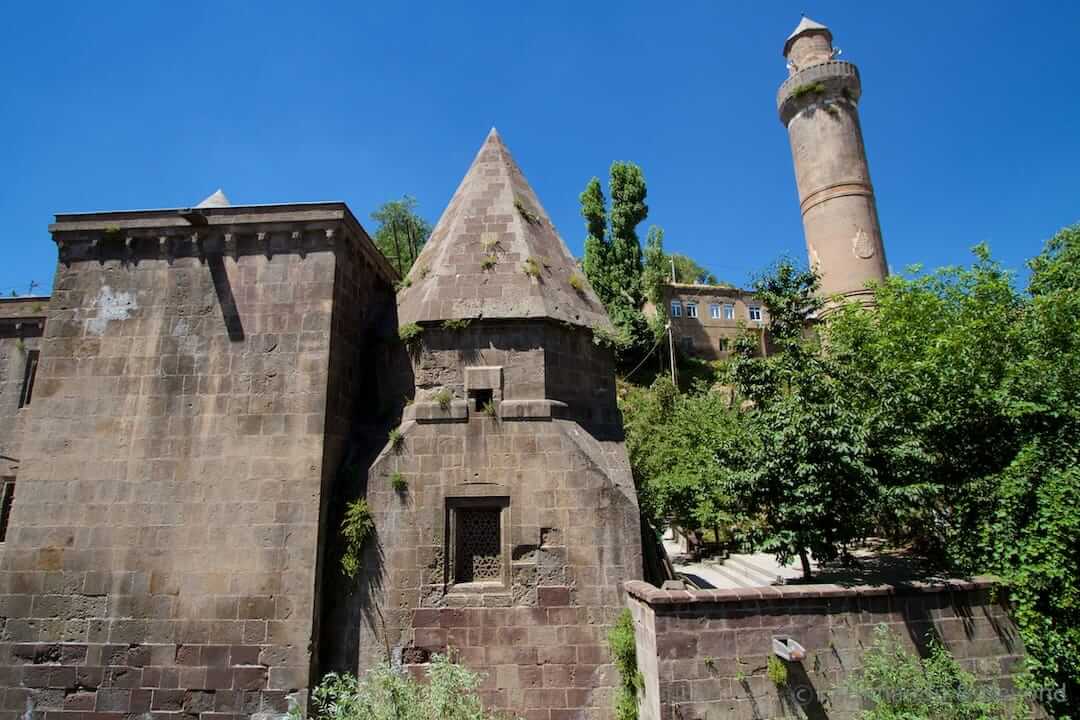
Above: Bitlis
Cavustepe (near Van)
Situated on the road from Van to Hakkari, the hilltop ruined palace at Cavustepe was once home to the mighty kings of Urartu. There isn’t a great deal to see at Cavustepe these days but the panoramic views in all directions make a visit worthwhile.
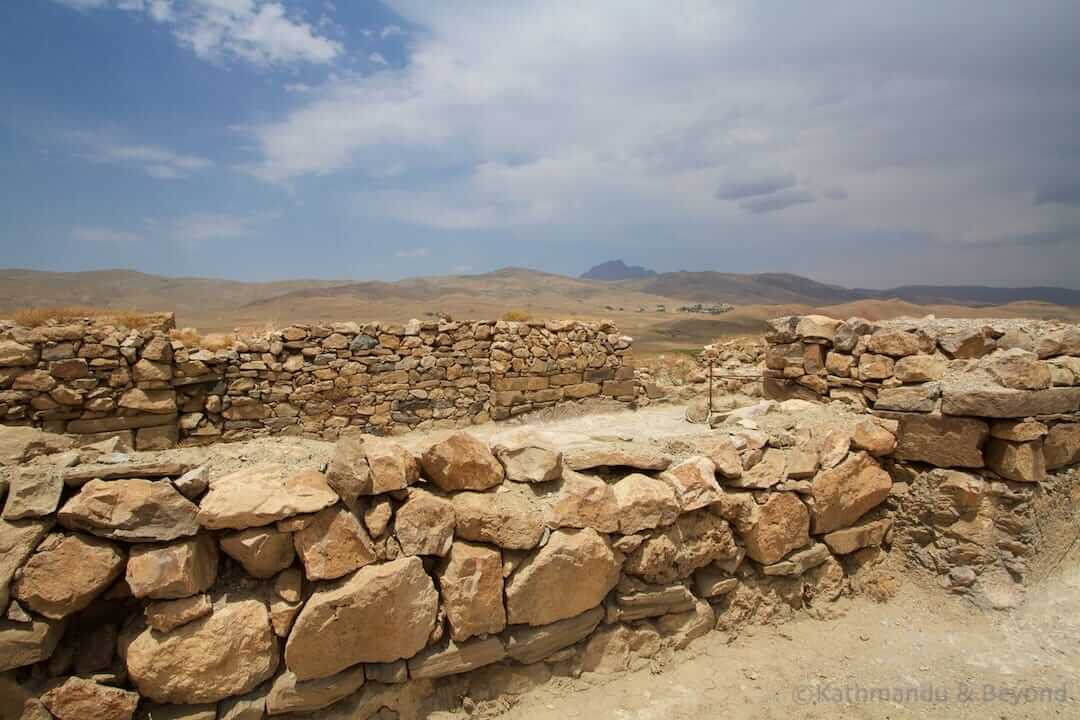
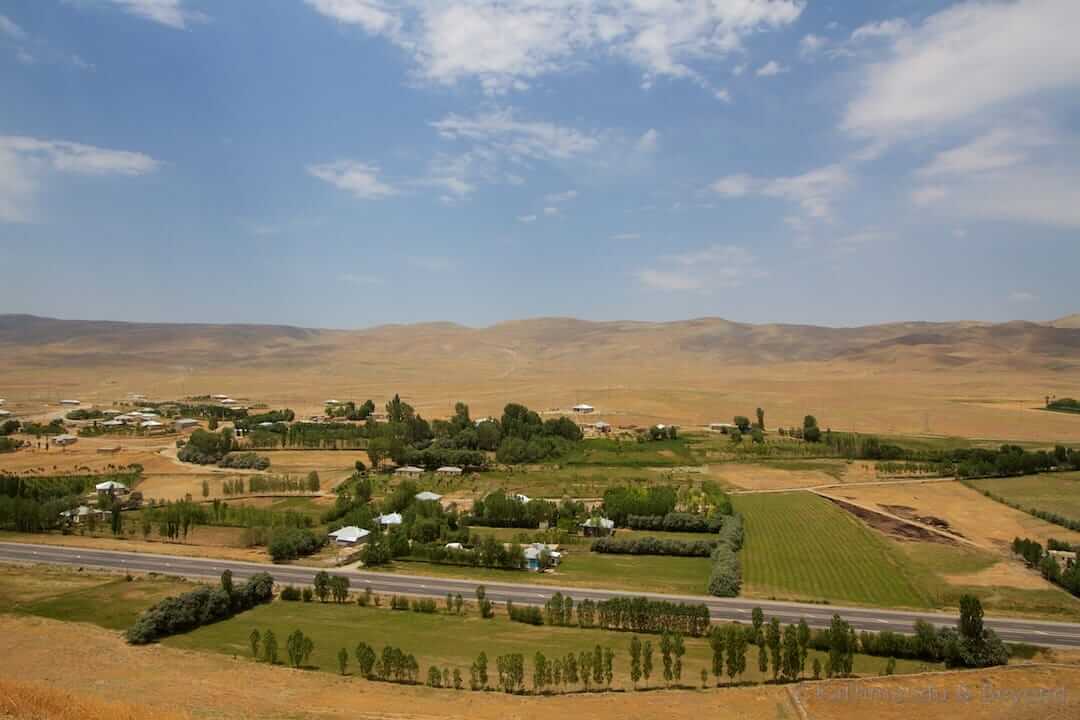
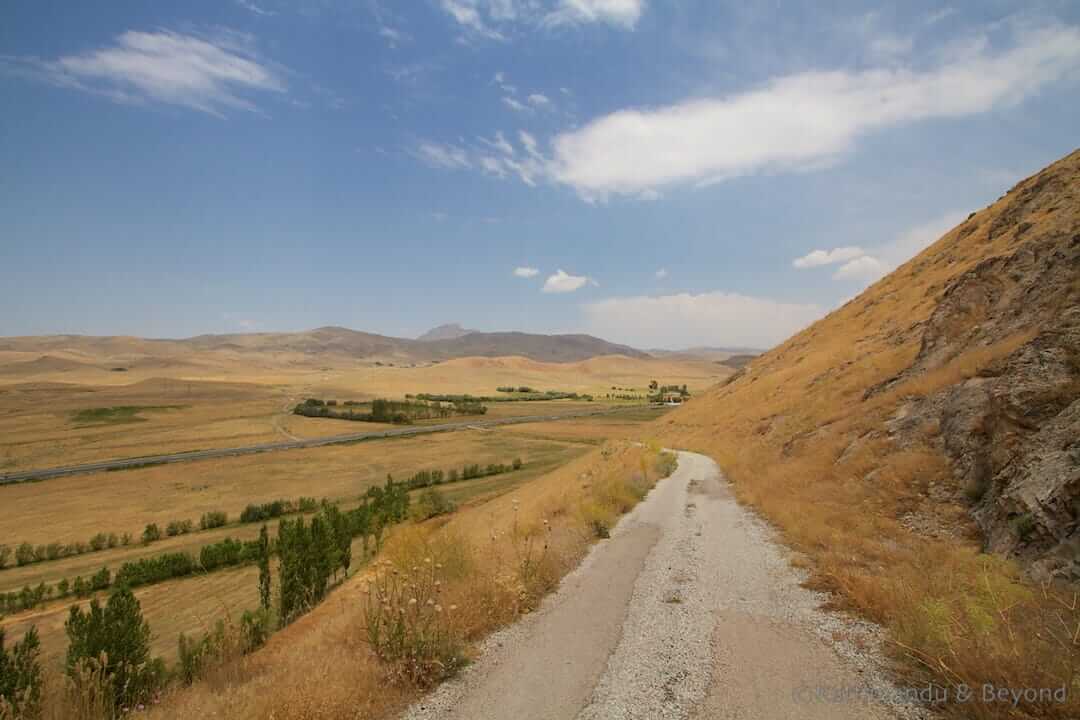
Above: Cavustepe with the Upper Castle (top)
The ancient city of Ani
On a ravine overlooking the Akhurian River and modern-day Armenia, the medieval city of Ani is one of Turkey’s must-see archaeological sites. The isolation and beauty of its setting alone are worth the one-hour drive from nearby Kars but add remnants of once-mighty stone buildings, including churches, bridges and even shops, and you begin to understand why this sublime place is often referred to as the Ancient Ghost city of Ani.
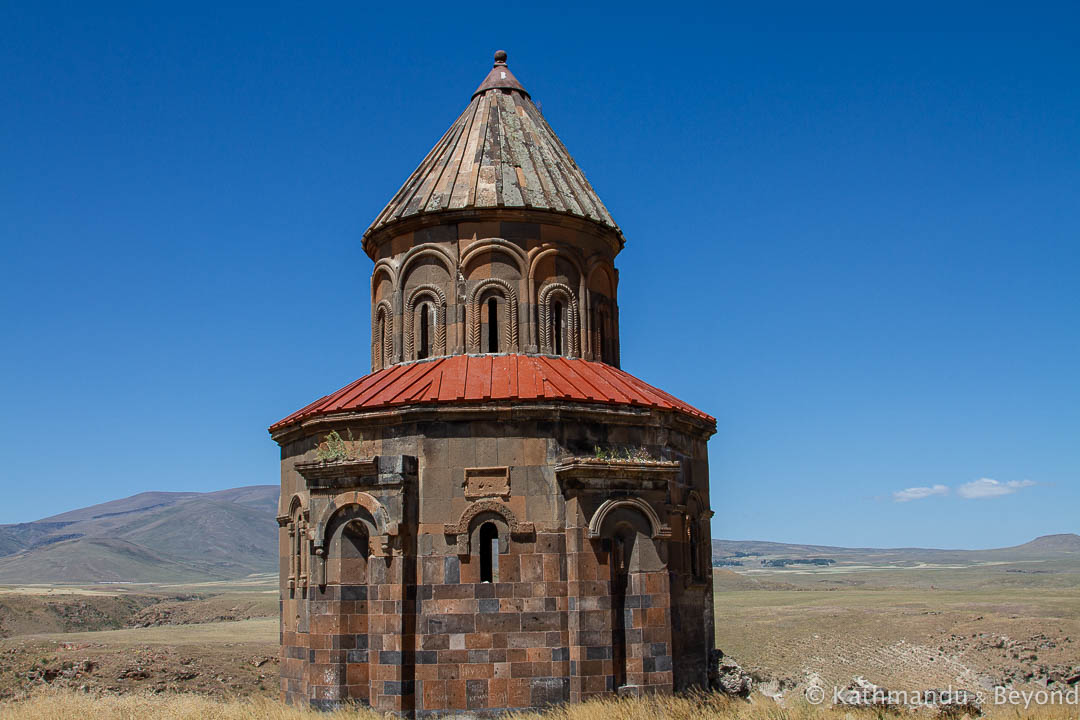
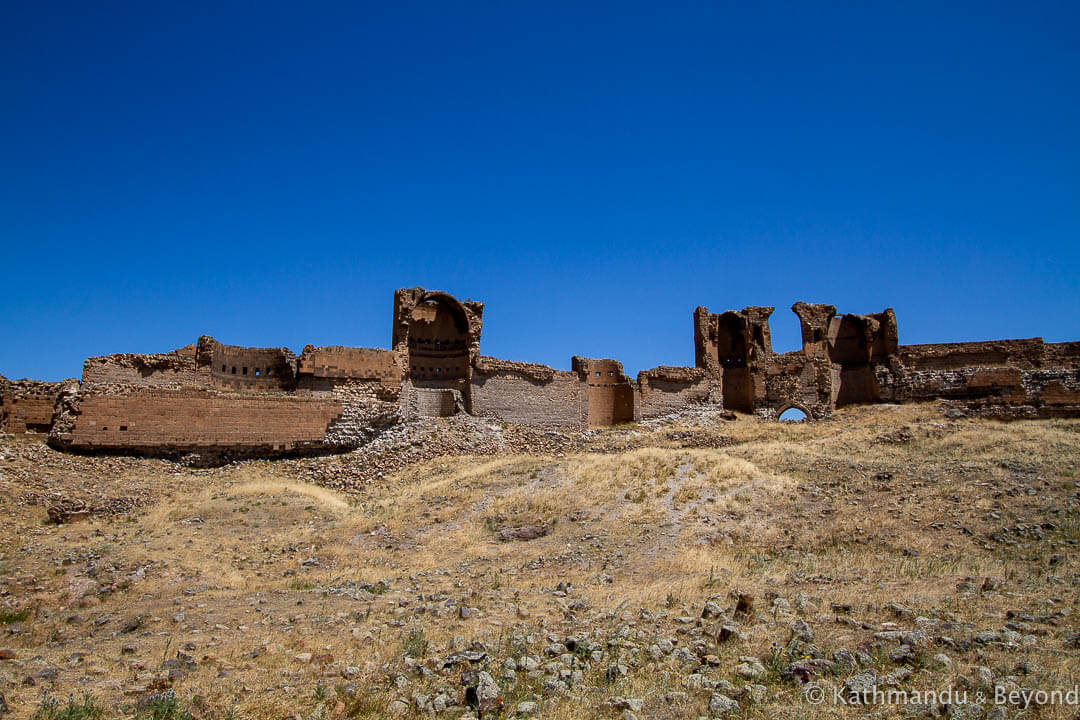
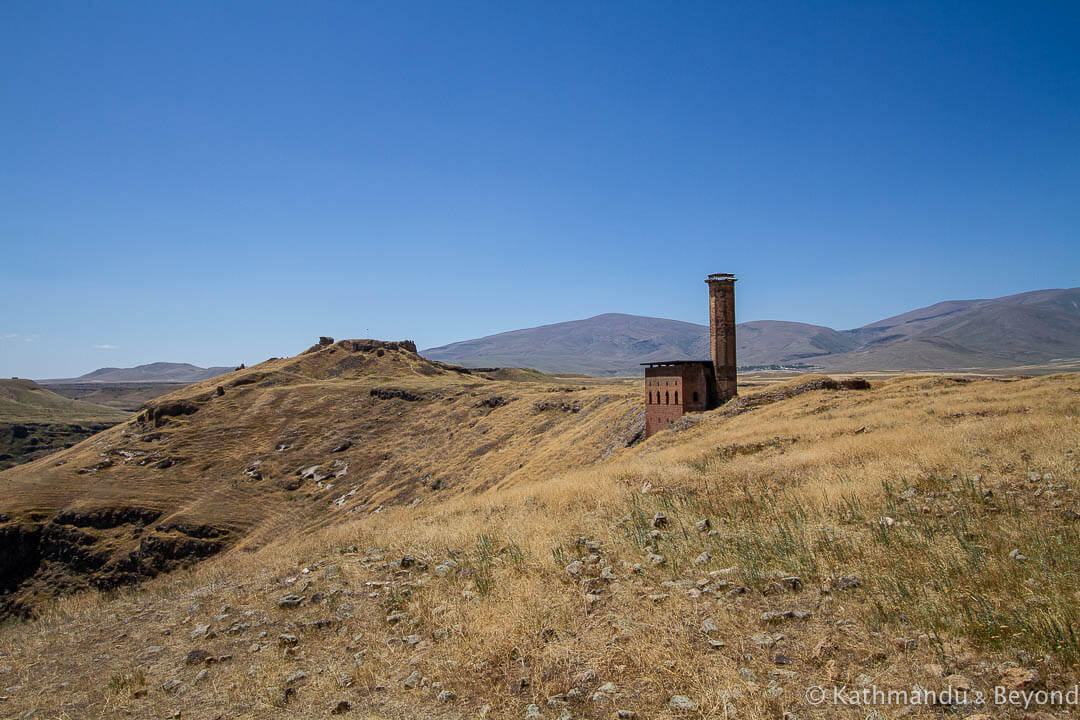
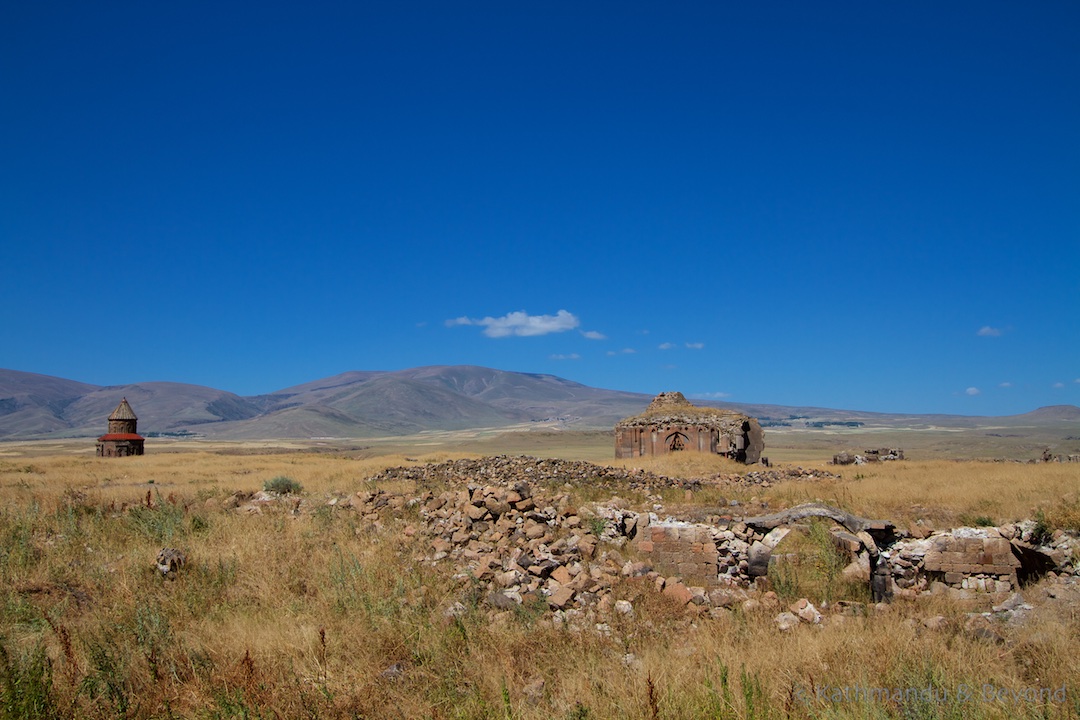
Above: Ani with the Church of St Gregory (top), city walls (middle, left) and Menucer Camii (mosque) (middle, right)
Diyarbakir
Recently awarded UNESCO World Heritage status (for its Fortress and Hevsel Gardens Cultural Landscape), the crossroads city of Diyarbakir is the cultural heartland of Kurdish identity. The city’s sights are interesting but not mind-blowing. What really makes Diyarbakir so special are the Kurds themselves. Proud of their heritage, courteous and friendly, the people of Diyarbakir will go out of their way to ensure you have a warm welcome in their city.
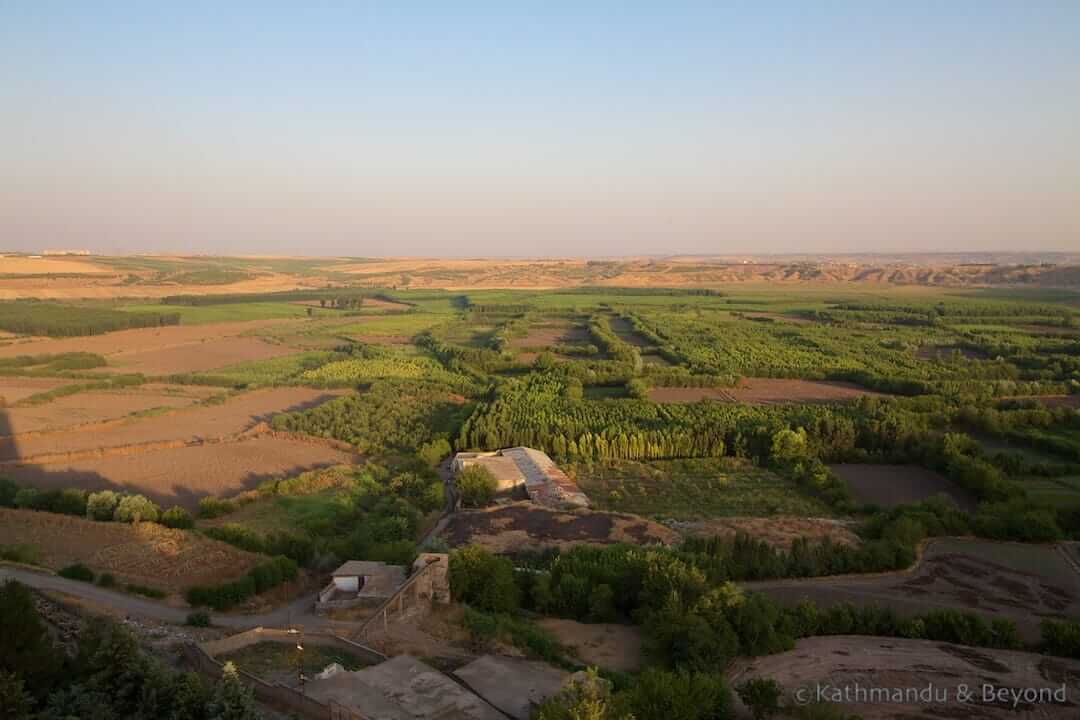
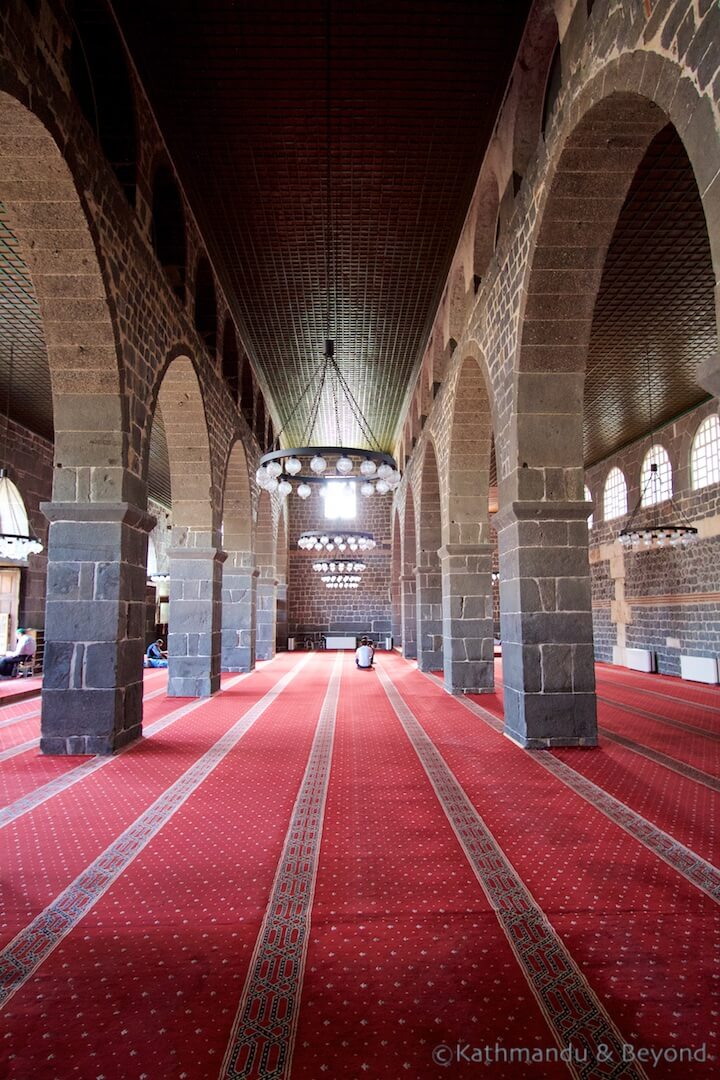
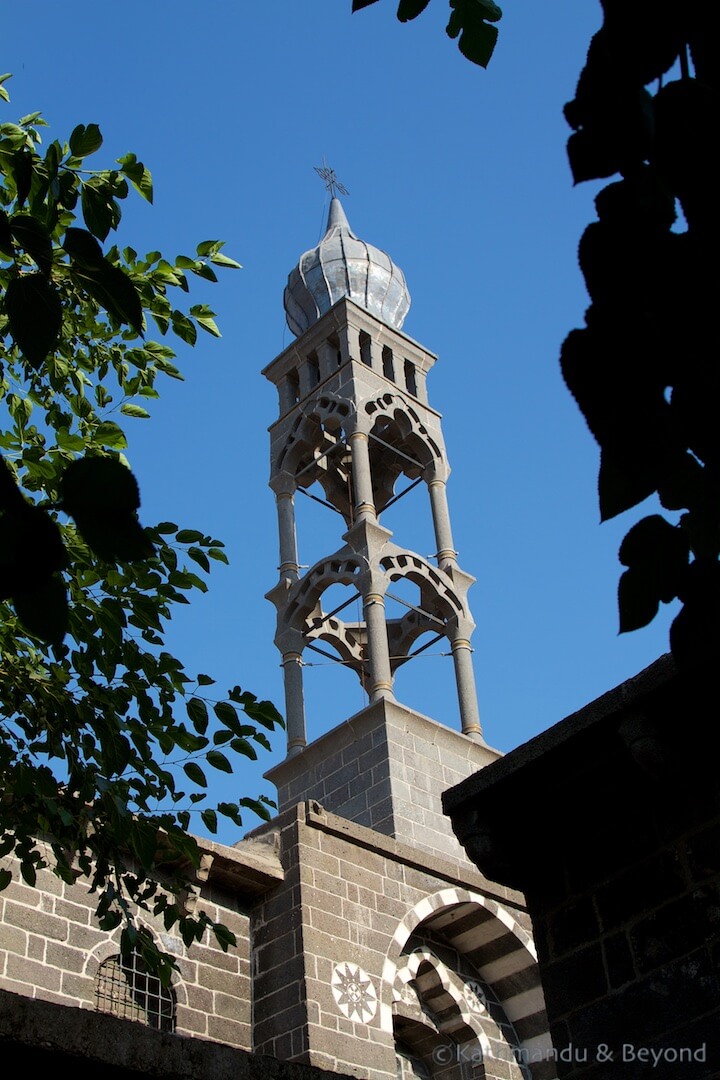
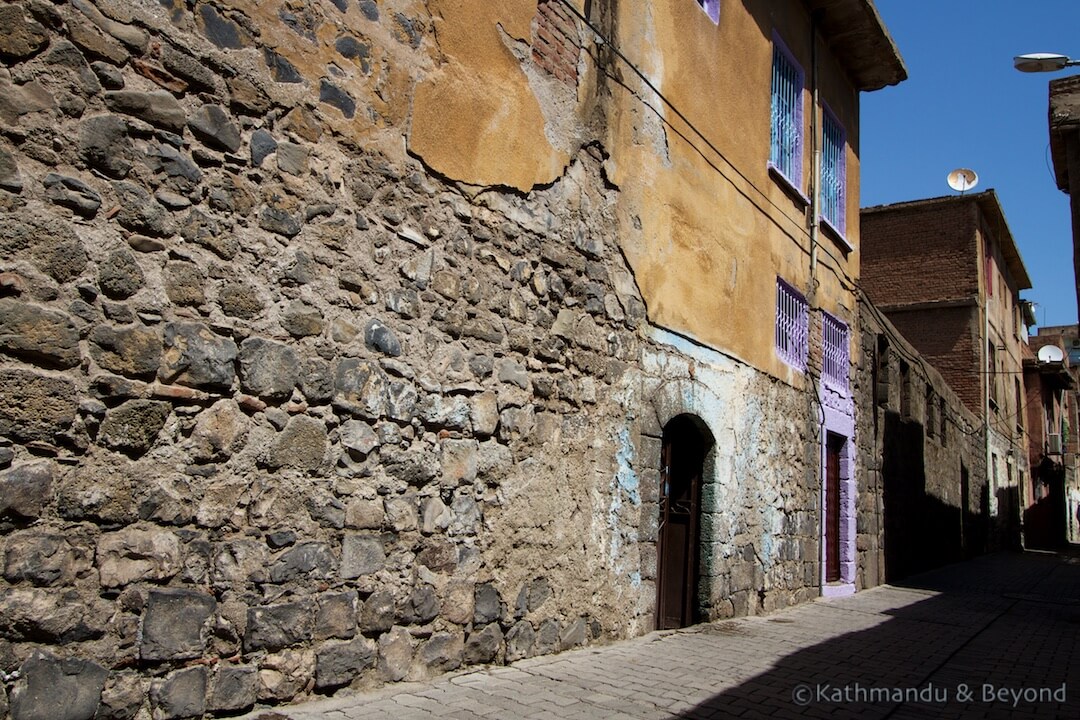
Above: Diyarbakir with Hevsel Gardens (top), Ulu Camii (Great Mosque) (middle, left), St. Giragos Armenian Church (middle, right) and the Old City (bottom)
Hasankeyf
With its location on the mighty Tigris River, Hasankeyf is an extremely picturesque town. This may not be the case for much longer though as the Turkish Government is building a controversial hydroelectric dam that could see the town disappear under the water in the not so distant future. For the time being, however, Hasankeyf, with its honey-coloured buildings, ancient mausoleums, and superb riverside setting, is an absolute gem and yet another destination that should not be missed.
Update April 2020
According to articles such as this article in The Guardian, as well as Wikipedia, the old city of Hasankeyf is now almost completely underwater. Only a few of the historical monuments have been rescued and moved to safer ground and local and international opposition has fallen on deaf ears. Sadly, it is probably not worth visiting Hasankeyf any longer but if you do, please let us know what you find by commenting below.
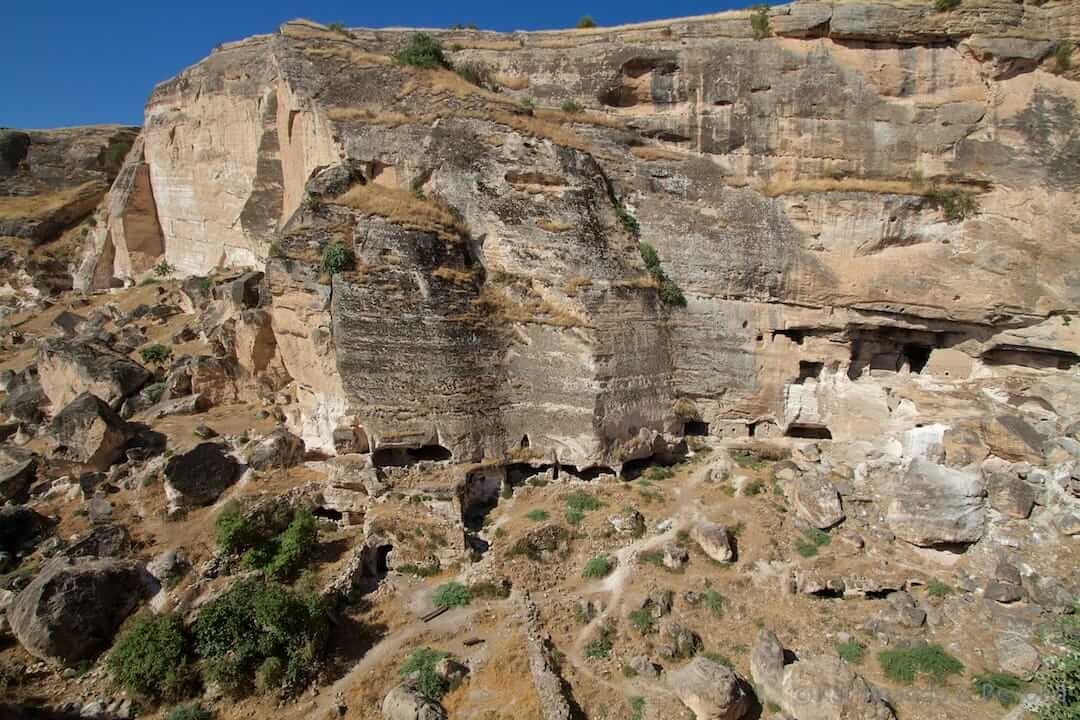
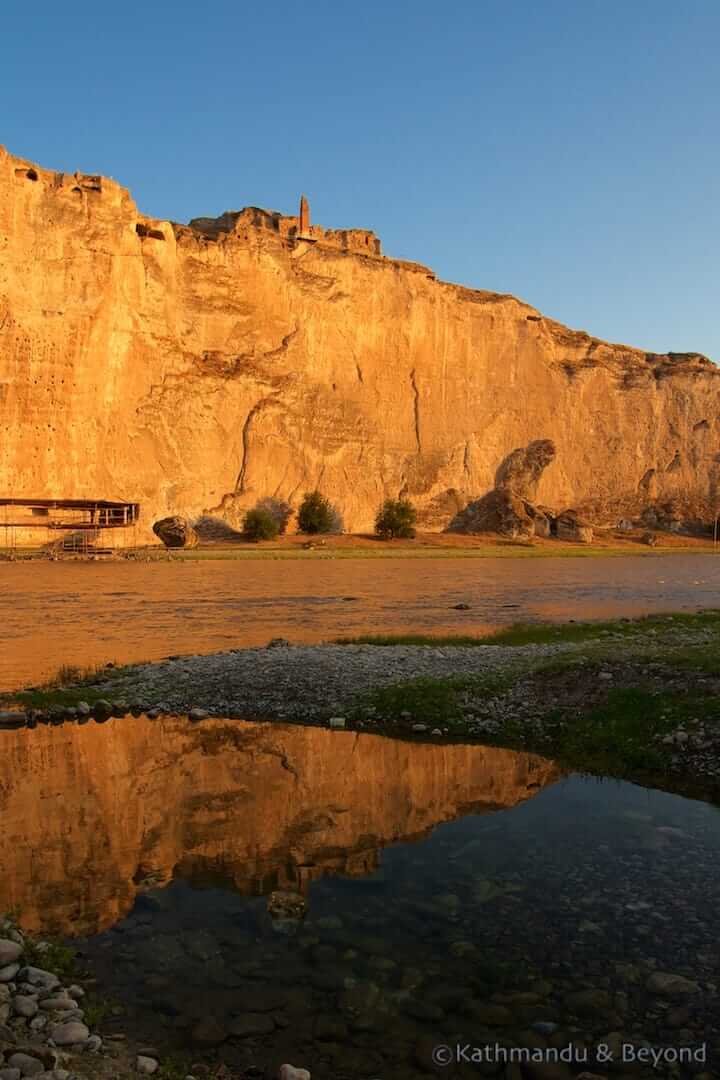
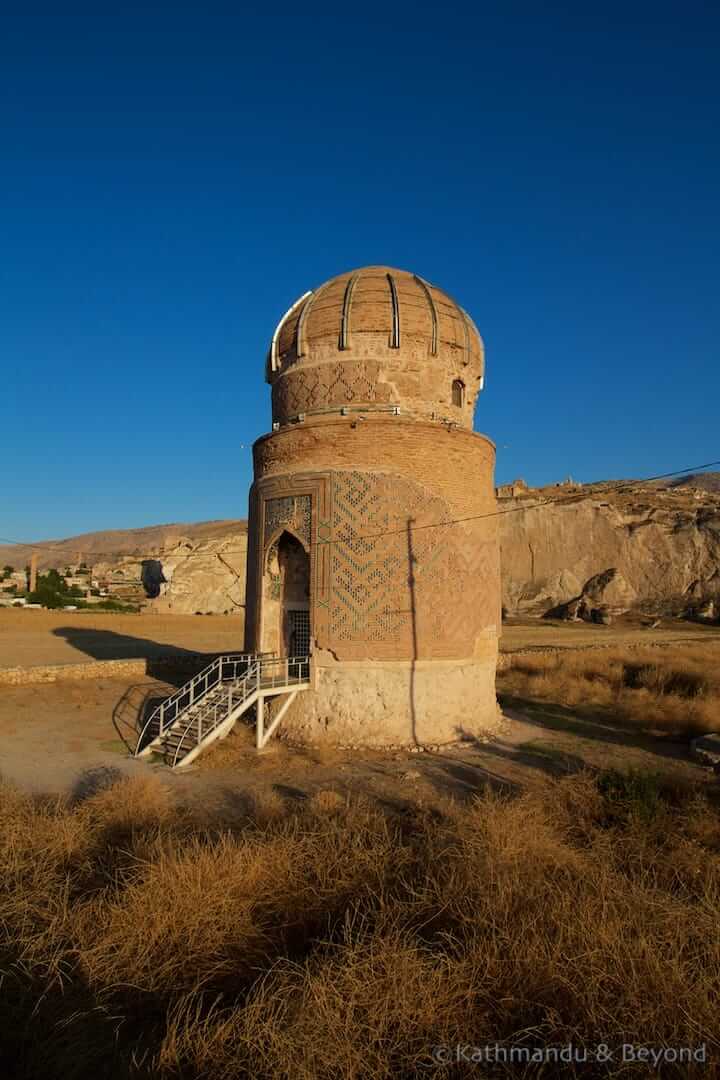
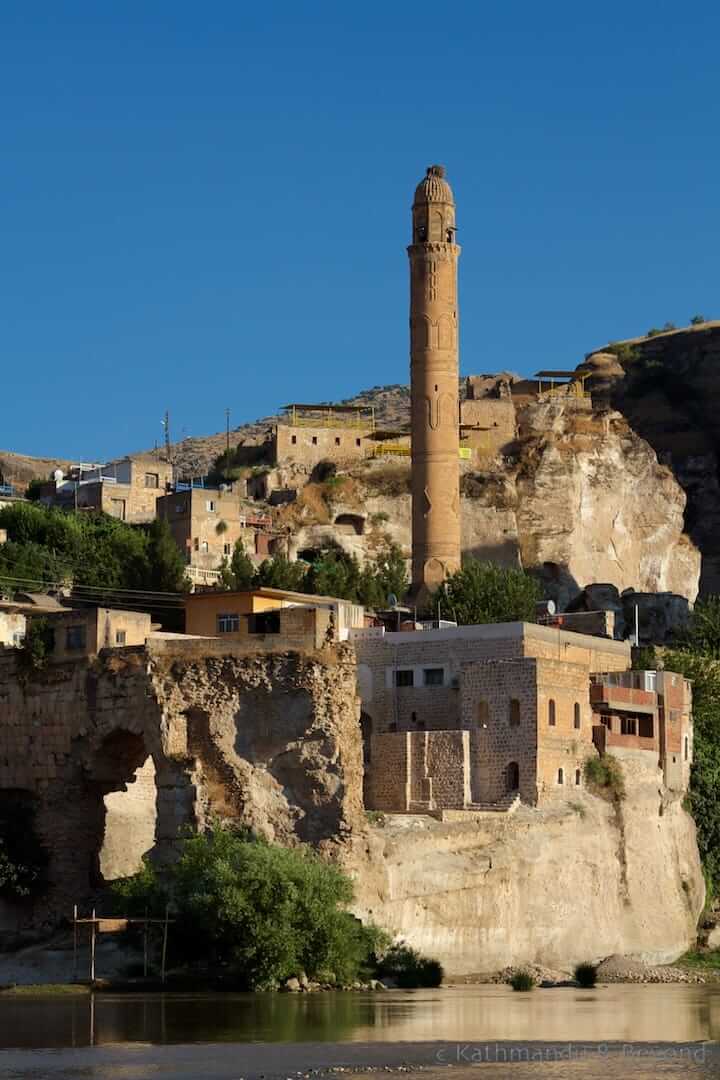
Above: Hasankeyf with Hasankeyf Castle (top and bottom, left), Zeynel Bey Mausoleum (bottom, middle) and Er-Rizk Camii (mosque) (bottom, left)
Hosap (near Van)
Without question, the superbly located castle at Hosap is one of the most impressive fortresses in Kurdistan. Dominating the tiny town of the same name, the castle’s medieval defensive walls are enormous and have no doubt repelled many a battle-hardened invader over the centuries.
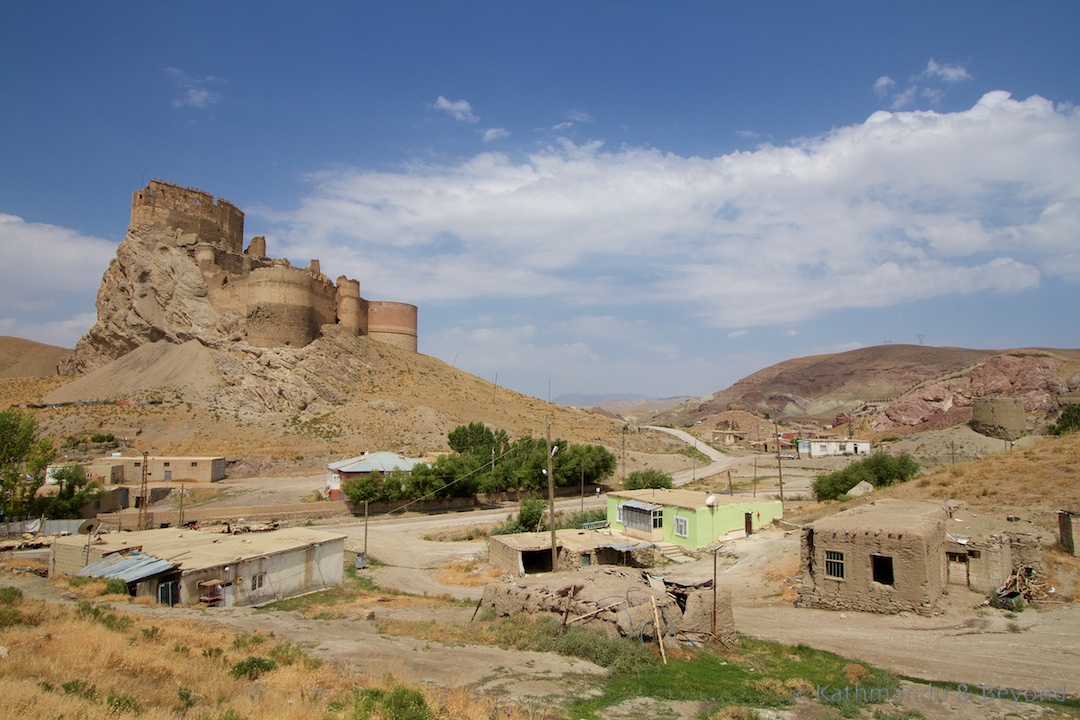
Above: Hosap Castle
Kars
The setting for Snow (Kar in Turkish), the acclaimed novel by Turkish writer Orhan Pamuk, Kars is an engaging city with a distinctive feel. A Russian outpost for decades during the latter part of the 19th century, many of the elegant buildings that line the city’s boulevards today still hark back to that period whilst Kars Castle dates back to 1153 and presents commanding views of the city below. Compact and easy to navigate, Kars is not just a jumping-off point for the ancient city of Ani; it is a destination in its own right and worth half a day or so of exploration.
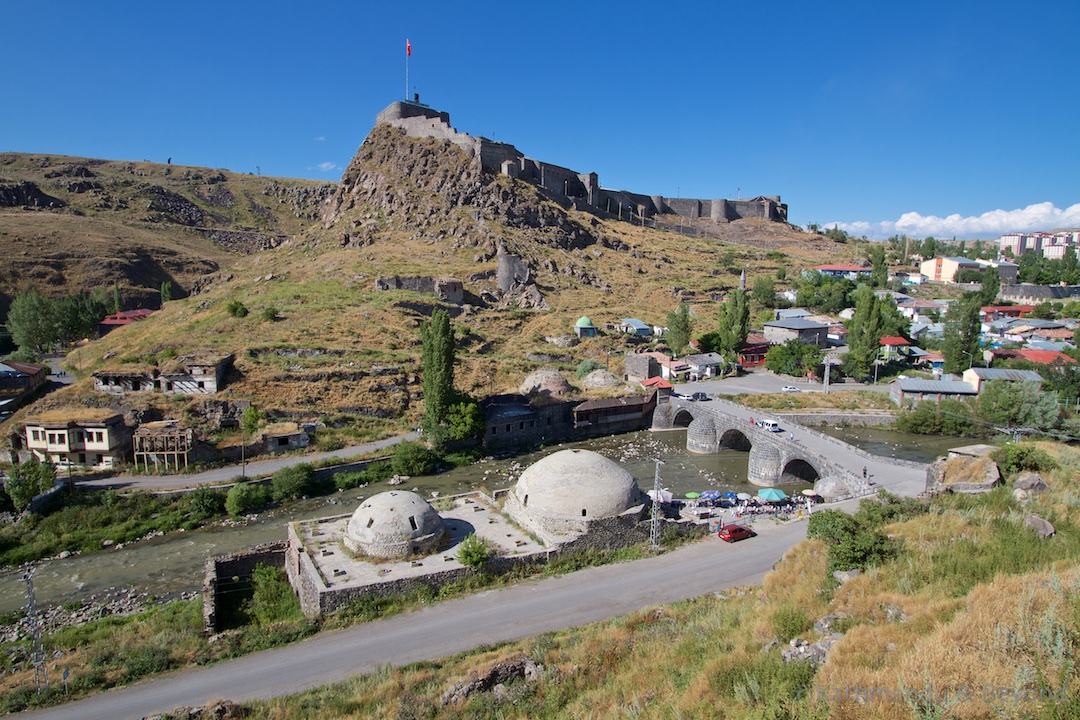
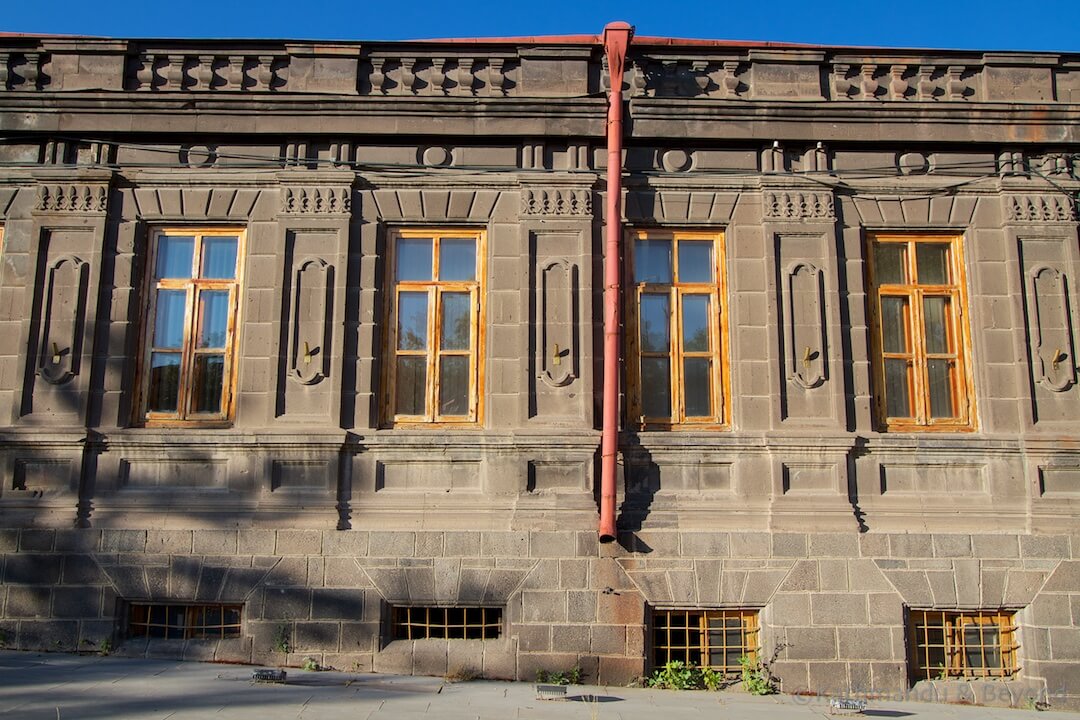
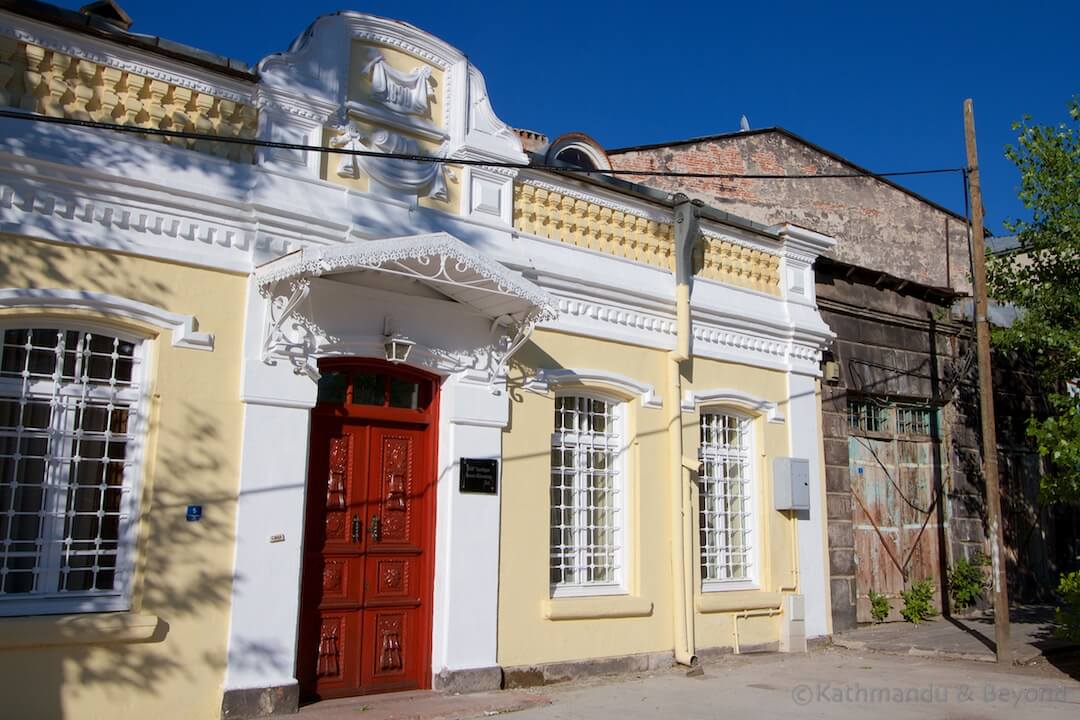
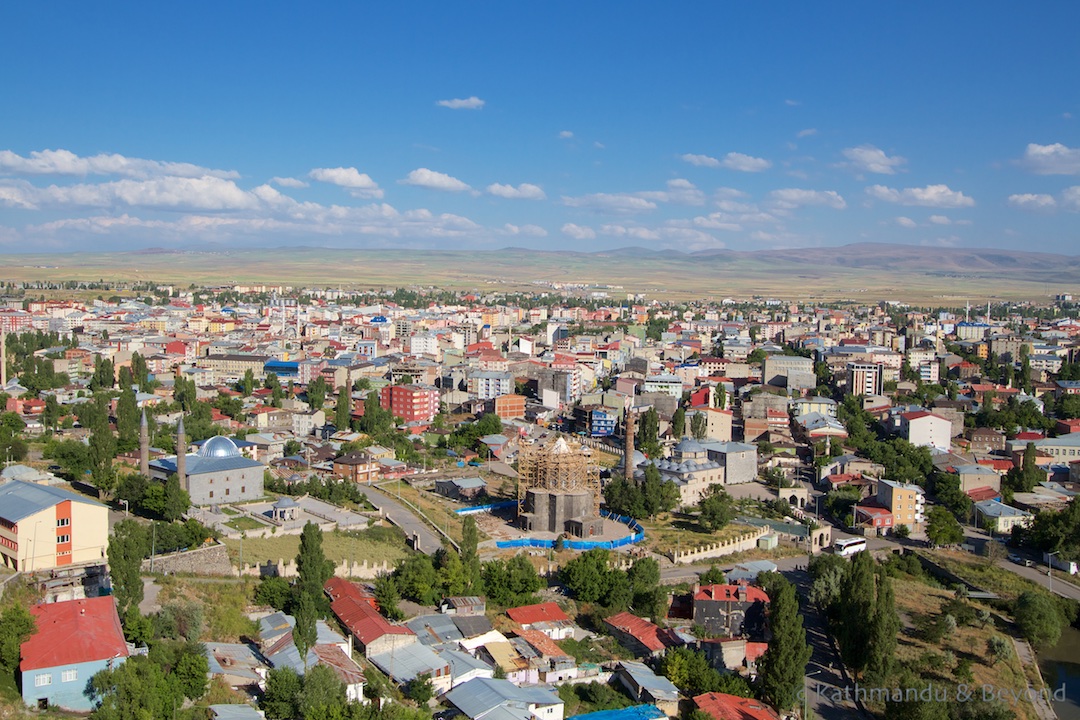
Above: Kars with Kars Castle (top) and Russian-era architecture (middle)
Mardin
Southeast of Diyarbakir and close to the Syrian border, Mardin’s network of winding backstreets, Arabic influences and mesmerising views across the Mesopotamian plains are but a few of the rewards awaiting the intrepid visitor who makes it this far into Kurdistan. Off-limits during much of the 1990s due to the ongoing conflict between the Turkish Government and the PKK, Mardin and the surrounding region can be visited again although the town’s proximity to the Syrian border may once more place its status as a top tourist destination in jeopardy (*).
(*) We visited in July 2015 without incident but the situation on the Turkish/Syrian border is extremely volatile and it is advisable to check the latest FCO Advice and forums such as Lonely Planet’s Thorntree for recent reports from travellers and locals before venturing this far south.
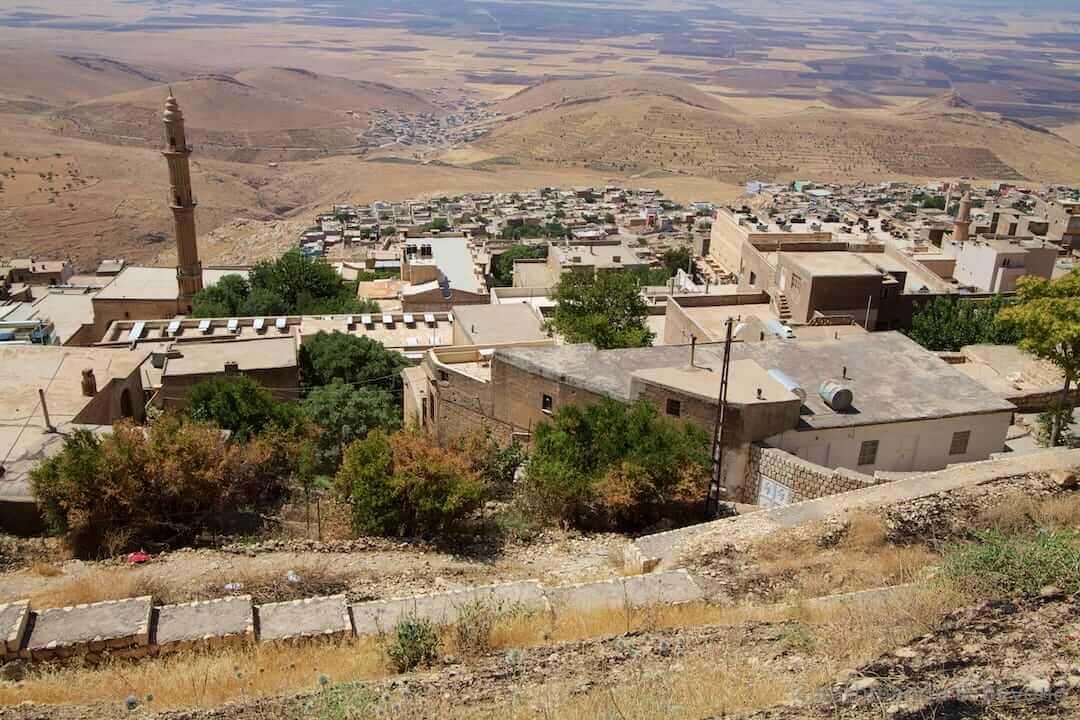
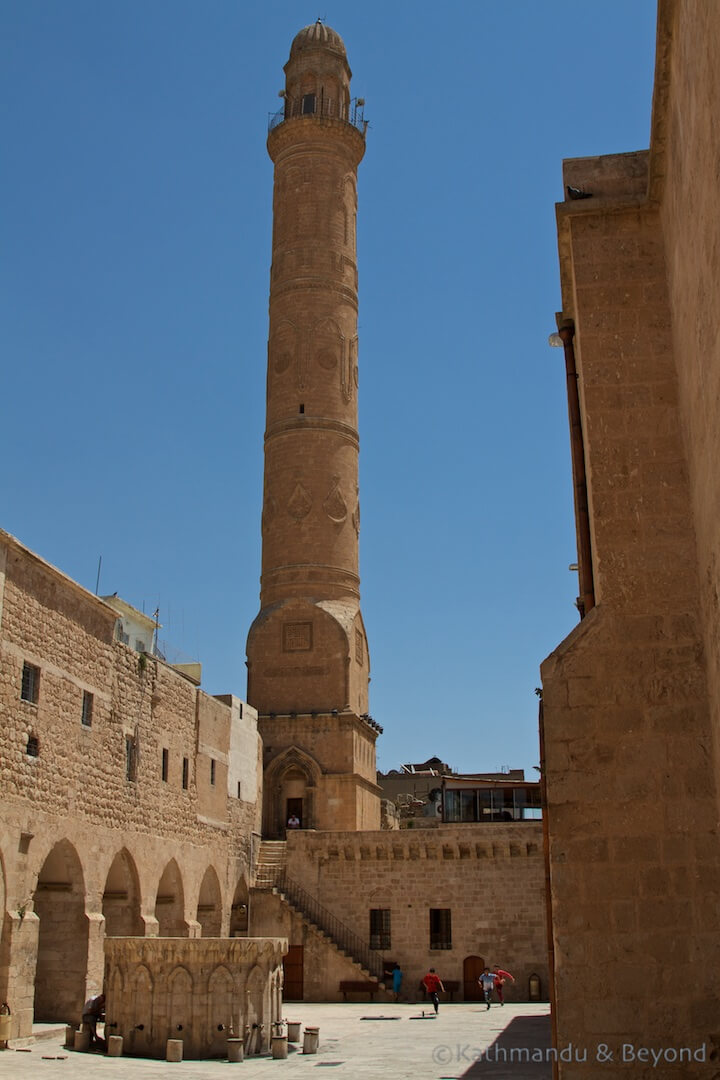
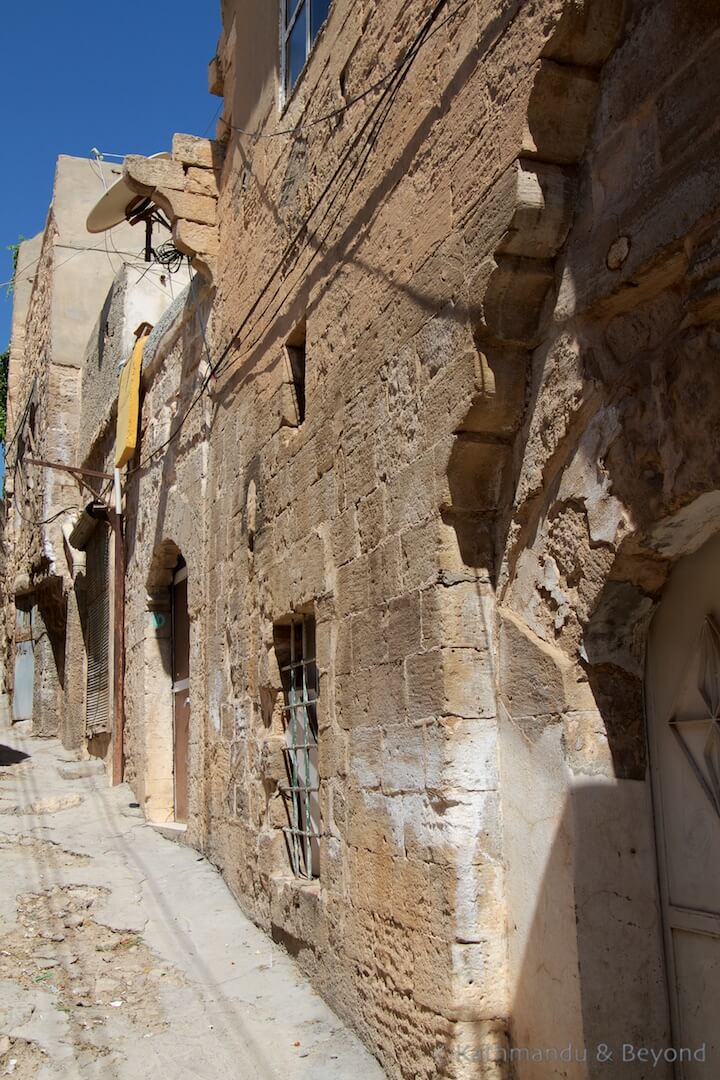
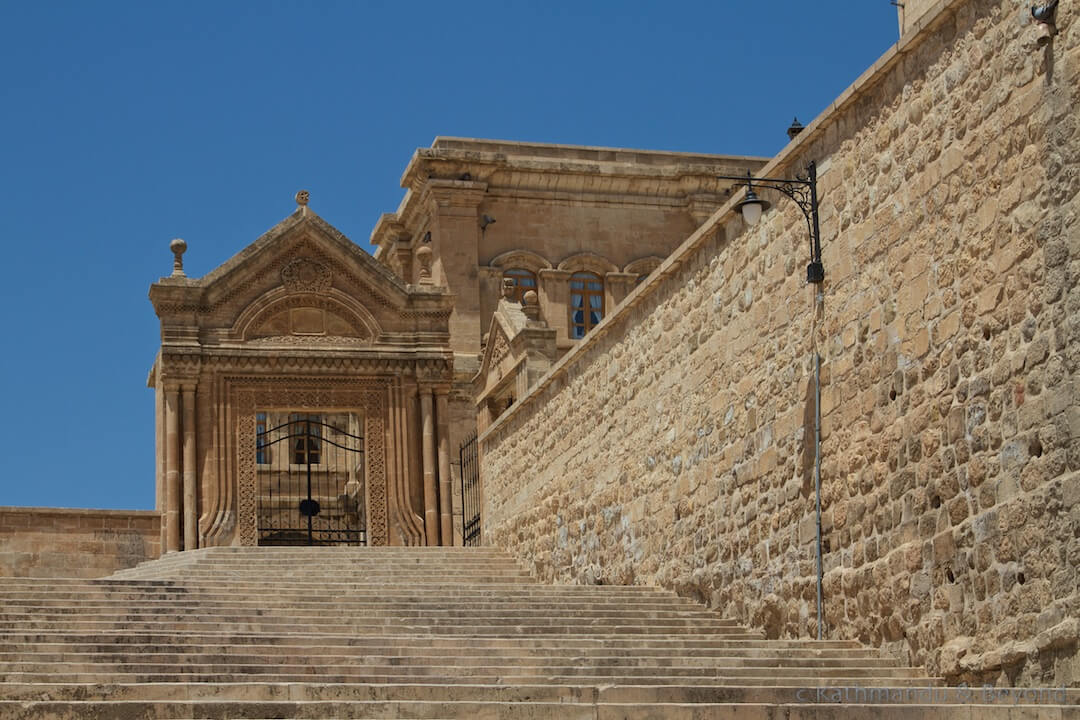
Above: Mardin with Ulu Camii (mosque) (middle, left) and Kiz Meslek Lisesi (below)

Have always wanted to go to Eastern Turkey – like most people the furthest East I’ve been is Cappadocia – and this post has certainly made me want to go even more. Some great photos and a very informative read – thanks for sharing!
Hi Joe, thanks for your comment and I am glad you enjoyed the post. As you can see, we really enjoyed Eastern Turkey and encountered no issues whatsoever but things seem to be taking a turn for the worst once more so please keep an eye on the FCO Advice.
Great photos. You have really peaked my interest in returning to Turkey.
Good stuff but don’t forget about Central Asia. The more I read, the more I am looking forward to our visit!
Wow, fabulous, I never thought such fabulous places existed in Eastern Turkey. I’d love to see – but that’s not going to happen anytime soon with all that’s going on in the region. You see the above and you realize what a damn shame it all is.
Great post.
Frank (bbqboy)
Thanks Frank. Yep, there is lots to see and do in Eastern Turkey. Our timing was OK when we visited – destinations really close to the Syrian border were of limits as were those close to the Iraqi border as well but we felt vey safe during our time in the region. As you point out, it’s a real shame the area is so volatile as it deserves to see way more tourists than it actually does. The coast is also a superb part of Turkey, especially if you like your ruins. I aim to write about the region when I get a minute. Where does all the time go!!
These places must be visited. Everything is so ancient and mysterious.
Thanks for sharing these photos and these areas of Turkey. In particular, Ani and Lake Van. THese are important areas of historical Armenia. My family comes from this area.
There are indeed. I can understand why places close to the Syrian and Iraqi borders see few visitors but it perplexes me why Ani isn’t as busy as say Angkor or Bagan for example – the site is truly world-class in my opinion.
Great site. Thanks. Has really whet my appetite to include more of Eastern Turkey in a trip being planned. Just a minor point. I think you mean west coast of Lake Van re placement of Bitlis. I think that’s right even though Google has about three different spots for Bitlis!
Thank you Robert and also thanks for pointing out my error re Bitlis. You are right, it is west of Lake Van and I’ve updated the post accordingly. We are massive fans of Turkey and have seen it extensively now but the east is still the most captivating bit for us personally and you rarely see another tourist there, which is another bonus on top of all the other positives about the region!
Well, we have a few things in common. Turkey was my second overseas motorcycle trip. I’ve since been soaked in lots to do with Ottoman history. That, of course, brings in Eastern Turkey and (tragically) Greater Armenia. Looking forward to visiting next year. You might like to have a look at this page http://www.motorcyclemeanders.com/turkey_14.html
Your post (and photos) bring back some happy memories. We covered the first pat of your trip before then heading east! We recently (2018) when from Batumi to Istanbul via the Black Sea coast and although that part of Turkey isn’t as interesting for us personally as the east, I must say we were blown away by Ankara (it was our first visit), which we also included as part of that trip. It’s an amazing city and well worth including on your agenda if you can!
Hi where can I obtain a detailed ‘paper’ map of this region?
Please let me know.
Thank you.
Don’t know the answer to this question. May be search eBay to see if anything comes up?